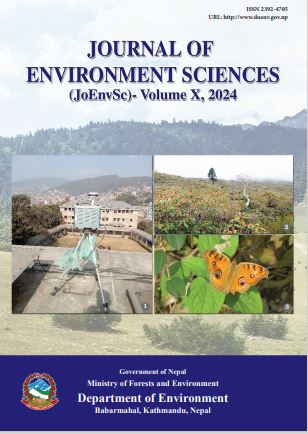Comparison of Vermicomposting Quality using Different Food beds
DOI:
https://doi.org/10.3126/jes.v10i1.66902Keywords:
Eisenia foetida, Nutrient value, Organic wasteAbstract
Organic waste management has been one of the great problem in urban areas. Among various efforts carried for managing the organic waste, vermicomposting is one of the efficient efforts that have been effectively applied in household and community level. Studies on vermicomposting process have proved vermicompost is quality compost with higher percentage of nutrient contents. However, based on the solid waste types and organic materials available in the waste, comparative study on the vermicompost is limited. This study was carried out to compare vermicompost quality using different organic wastes as food beds. A research was carried out at Madhyapur Thimi, Bhaktapur using cow dung, tea leaf, vegetables and their combination as food substrates. 100 gm of Red worms (Eisenia foetida) was used. Different parameters such as pH, Moisture content, Electrical Conductivity (EC), Organic Matter (OM), C: N ratio, Nitrogen (N), Phosphorus (P) and Potassium (K) were analyzed. Positively strong correlation was found between electrical conductivity and potassium whereas negatively strong correlation found in nitrogen and C:N ratio. There is found to be have a significant difference in parameters between different treatments. However, all are effective compost producing quality nutrients among which vermicompost with tea leaf possess high nitrogen and phosphorus, while combination of vegetable and cow dung gave high potassium value.




